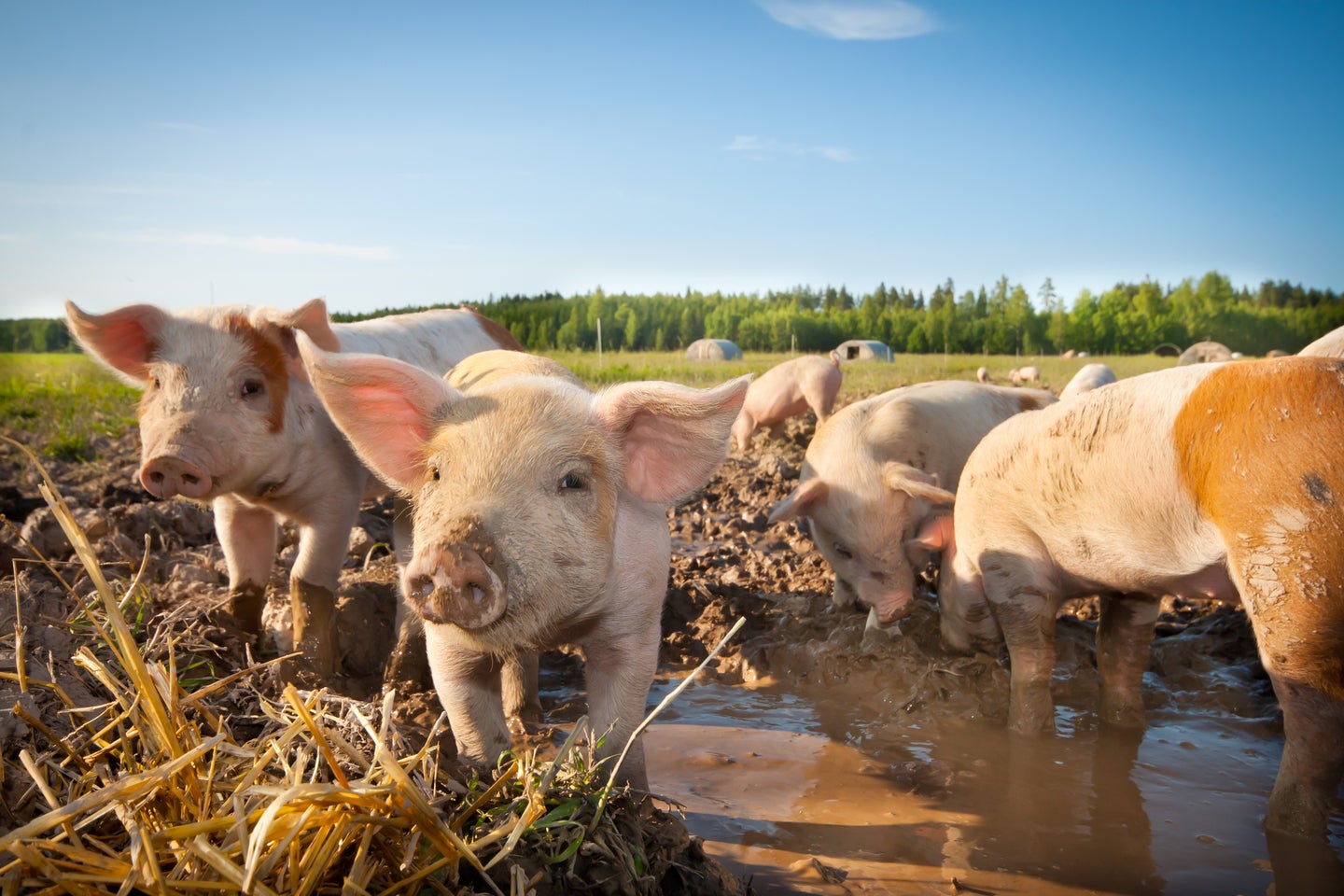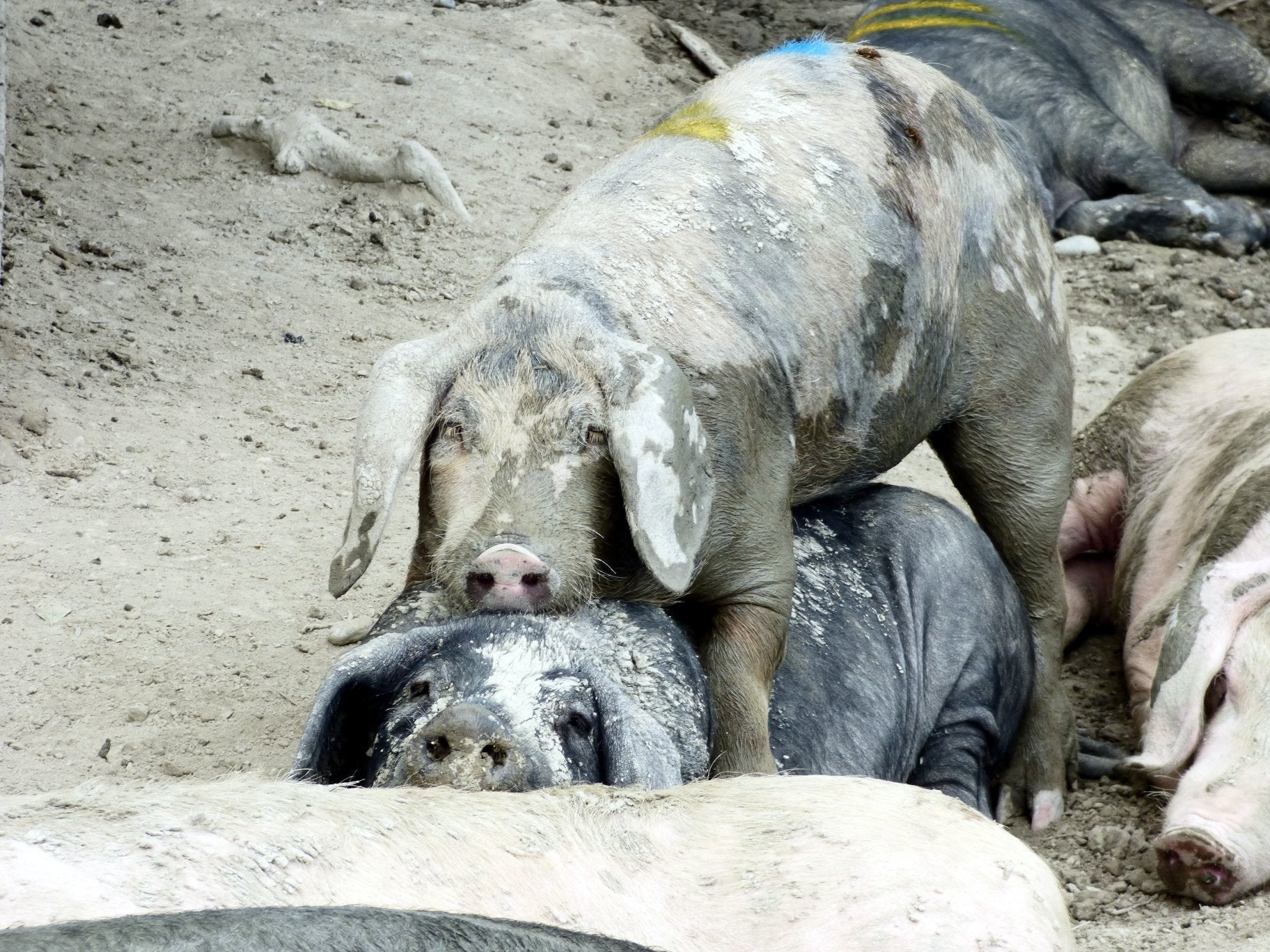
The bystander effect, or bystander apathy, was first popularized in 1964. The term aims to explain how some people are discouraged to interfere with an emergency situation, during an assault or crime, or against a bully. According to Psychology Today, the greater the number of bystanders watching an aggressive action occur, the less likely it is for any one individual to step in and help. Witnesses are more likely to take action during a crisis if there are few or no other people present.
It turns out that humans are not necessarily alone in having complex social structures and reactions when they witness something aggressive.
A small study published yesterday in the journal Animal Cognition suggests that when two pigs are fighting, a bystander pig’s intervention can either reduce the number of attacks by the aggressor or can help reduce the anxiety in the victim. This is a step in untangling one part of complex social groups that pigs form—how they may resolve conflict.
[Related: Baby seals are born with a great sense of rhythm.]
In social animals like pigs and humans, the resolution of a conflict usually involves one of two events: a reconciliation of the former opponents (an aggressor and victim) or the introduction of “triadic contacts.” These are third-party bystanders that aim to reduce further aggression or anxiety. While these conflict-resolution strategies are important to maintain balance animal social groups and also anxiety in victims, it has been unclear how these strategies apply to domestic pigs.
To learn more, Giada Cordoni, Ivan Norscia, and colleagues from the University of Torino in Italy observed how a group of 104 pigs on a farm resolve their conflicts after fighting. Based on their breed, size, markings, and genetics the authors were able to identify most of the generations within the group. This helped them determine how the pigs were related to one another.
From June to November 2018, they observed and recorded interactions between the pigs, noting aggressive behaviors like pushing, biting, head-knocking, and lifting of a victim pig. The team also observed the pig’s behavior for three minutes after each aggressive conflict, nothing the relationship, gender, and ages of the involved pigs.

They found that both the vicim and aggressor pigs showed reconciliation behaviors, such as nose-to-nose contact, sitting in physical contact with one another, and resting their heads on one another. Both the aggressor and victim began these behaviors equally following a fight, but there were more reconciliations in more distantly related pigs than related pigs. Kind of similar to how its sometimes much easier to forgive a good friend than a sibling.
According to the authors, the pigs may value different relationships based on what they can provide for each other, such as social support. Damage to social groups caused by feuding closely-related pigs (defined as half or full siblings) might also be less severe because these relationships are possibly considered more secure. However, the distantly related pigs may be more likely to engage in apologetic behavior after a fight to make sure that they still have the social support they need and, importantly, access to shared food resources.
[Related: Culver City is home to a unique cat versus coyote conflict.]
But what about bystander pig in conflict resolution? The authors noted behavioral differences that depended on which pig the bystander pig approached and engaged with following an altercation. The number of aggressive behaviors didn’t change if the the bystander approached and engaged with the victim. However, the average hourly frequency of anxiety-related behaviors (yawning, scratching, shaking, and chewing with an empty mouth) observed in the victim dropped significantly when a bystander pig got involved.
If a a bystander pig approached the aggressor and not the victim, the number of aggressive behavior attacks directed towards the victim was significantly reduced. They also observed that the bystander pigs intervened if the conflict involved either a victim or aggressor that they were closely related to, suggesting that pigs place value on certain relationships and may support closely-related kin.
The authors note that the study looked at only one group of adult, domestic pigs, so it is not necessarily an indicator or how conflict resolution works in all pig cliques.
While more study is needed to really understand pig culture, the reconciliation and interactions with bystanders after the conflict, suggests that pigs might possess a degree of socio-emotional regulation abilities that can change what they and other pigs experience during a group conflict.
The post Pig bystanders are pretty good at resolving anxiety and conflict in the pen appeared first on Popular Science.
from Popular Science https://ift.tt/eqW3ZwN



0 Comments